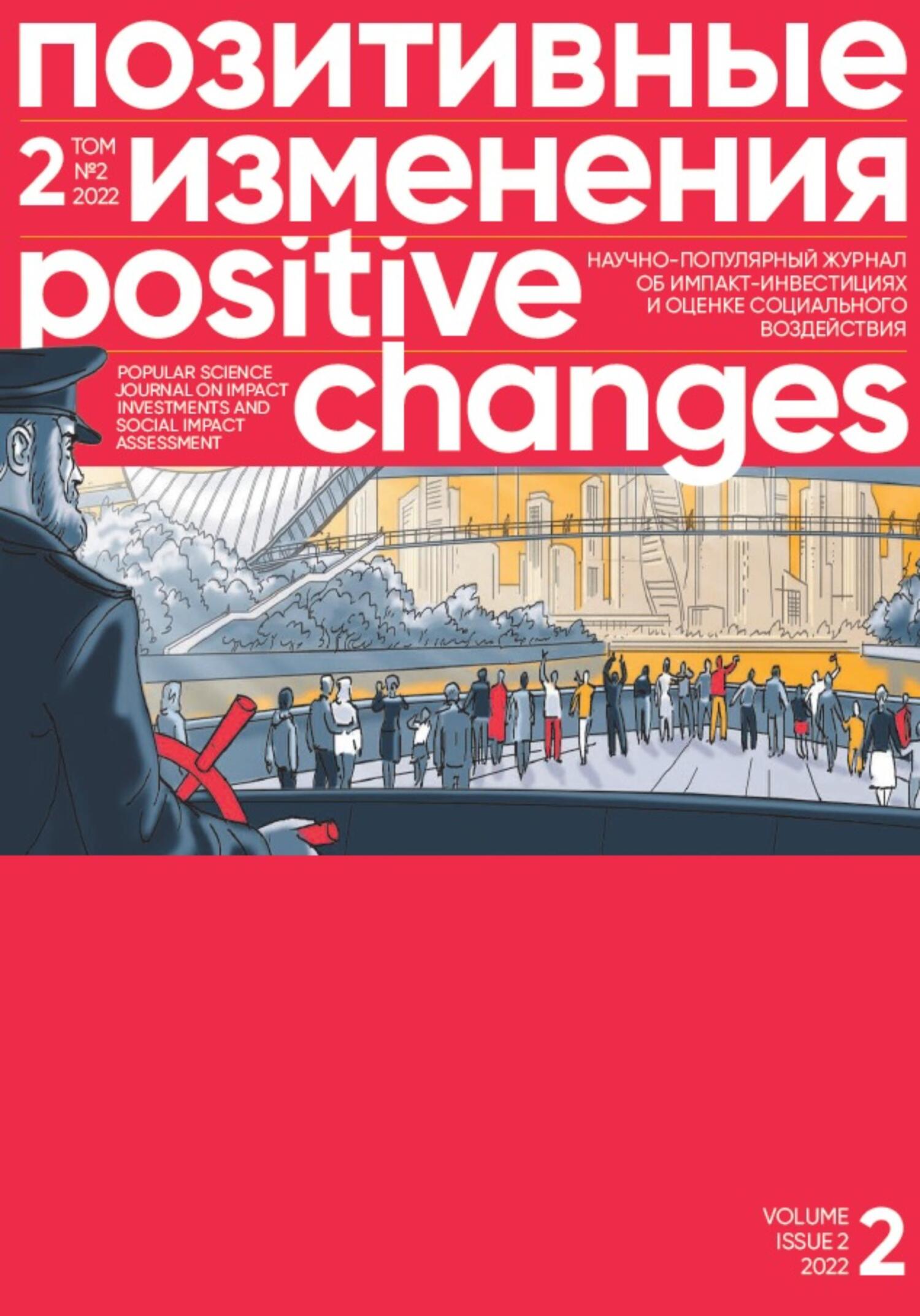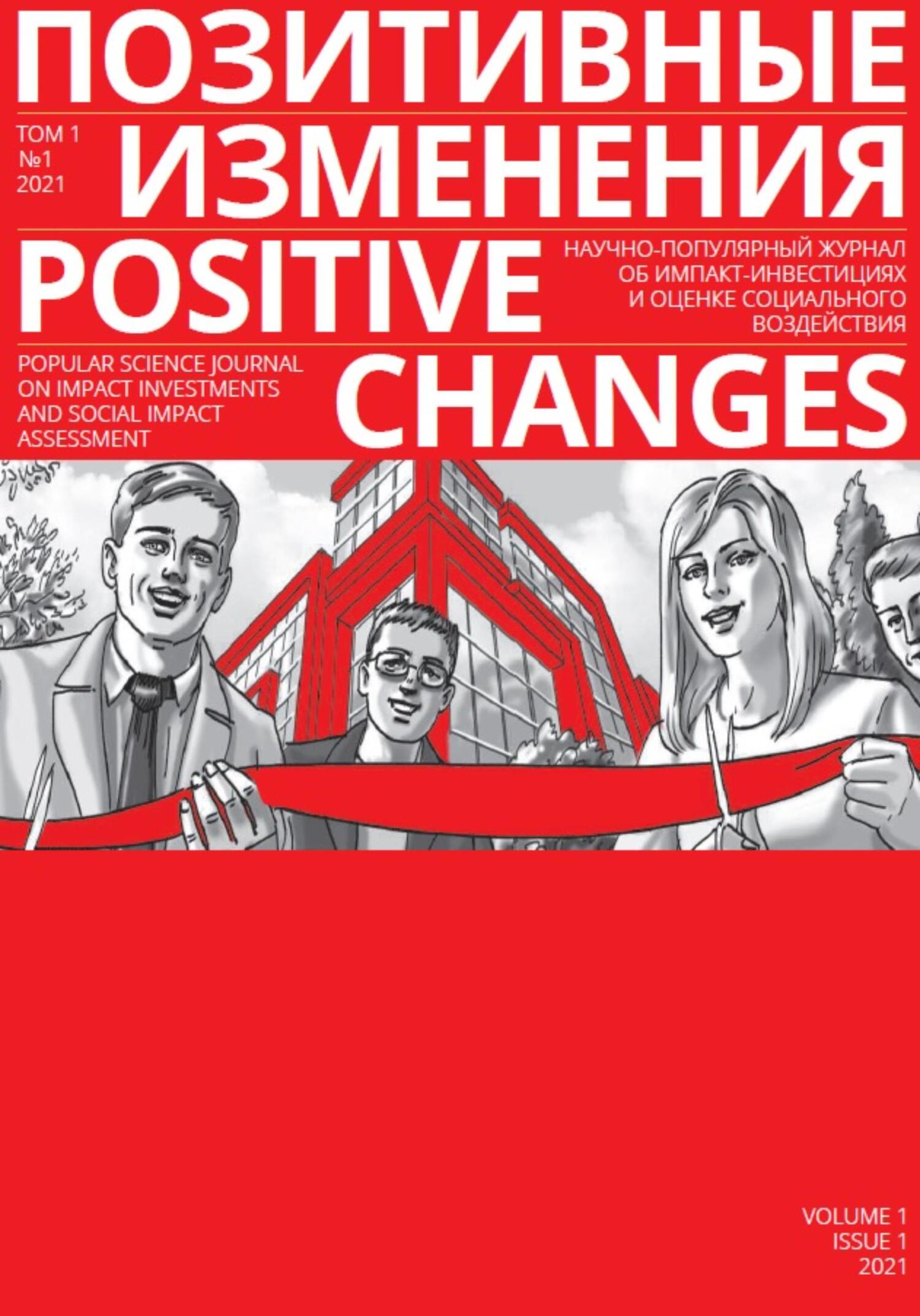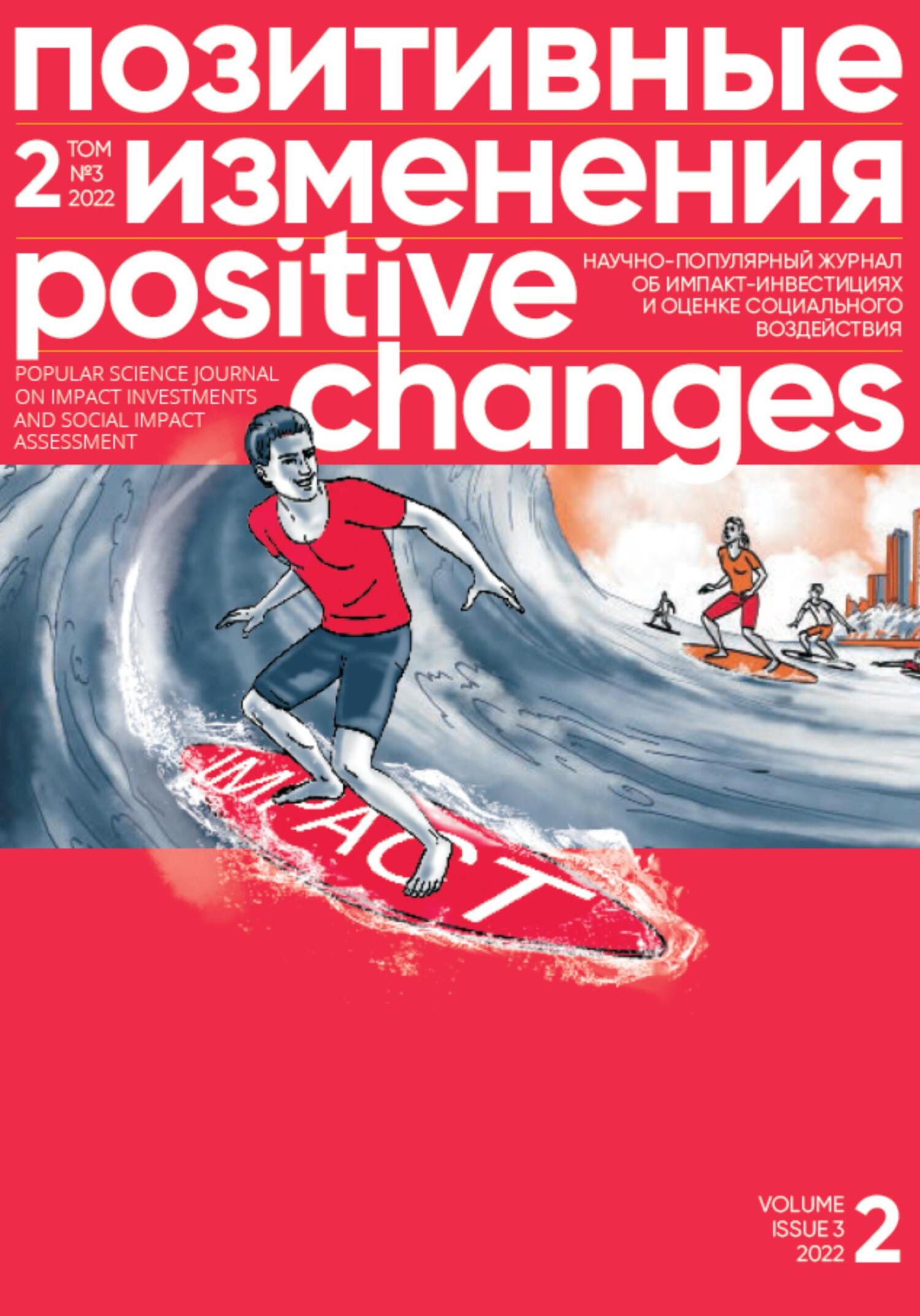about its allocation along the impact capital chain, thus deciding the impact orientation of the capital. All the actors belong to an ecosystem, where each member plays a critical role in trying to mitigate the risk of impact investments and expand the pipeline of investable opportunities. The analysis of the business model is, thus, a driving factor in understanding the organizational actors targeted by impact investing capital providers and in differentiating them in respect to those targeted by other types of social finance. The chapter concludes with a discussion of delivering on the promise of impact investing.
https://clck.ru/iYiM8
SOCIAL INVESTMENT PROJECTS: REGION-SPECIFIC RISKS
2022, Creative Economy. T. V. Bart, V. H. Martyniuk
In this article, the researchers review various actions stimulating investment in the social sphere, given the need to fight the consequences of the COVID-19 crisis and to maintain fiscal balance of the constituent entities of the Russian Federation. Regional development is analyzed by the tax potential index. The study highlights the advantage of the "Territory of Advanced Social and Economic Development" legal regime and the "Far Eastern concession" model to stimulate investment in social infrastructure projects. The authors reason that new instruments of debt financing — ESG-bonds, municipal and infrastructure bonds, crowdfunding, preferential budget lending — contribute to the growth of social investment projects, taking into account the assessment of regional sectoral risks, regulation and stimulating fiscal policy.
https://clck.ru/ia7jv
EVALUATION IN IMPACT INVESTING: WHERE WE ARE AND WHERE WE ARE GOING, CHAPTER IN THE BOOK "HANDBOOK OF RESEARCH ON GLOBAL ASPECTS OF SUSTAINABLE FINANCE IN TIMES OF CRISES" 2022, IGI Global
Eugenia Strano, Alessandro Rizzello and Annarita Trotta
The emergence of impact investing over the past decade has been accompanied by an increased interest of practitioners and scholars in the impact evaluation topic, one of the twofold pillars of the such an innovative financial approach. To contribute to the international debate, this study adopts a qualitative approach by obtaining results from a systematic literature review of extant research. This is useful to 1) identify the current existing impact evaluation approaches adopted in the field and 2) derive an empirical analysis in the impact investing sector with a focus on impact measurement in social impact bonds. The study opens interesting insights into recognizing the potential for the whole impact investing field, deriving both from theory and evidence of impact evaluation practices.
https://clck.ru/iYh5v
INFLUENCE OF MODERN "BUSINESS SOCIALIZATION" CONCEPTS ON COMPANIES' STRATEGIES
2022, Chelyabinsk State University Newsletter. E. V. Kozlova
More and more companies today take into account the environmental and social impact of their operations, while developing their strategies. Tightening environmental and social development requirements force companies to consider these in their development strategies and programs. Contemporary approaches to evaluating the effectiveness of sustainability projects tend to focus on measuring quantitative indicators (the number of activities carried out or the amounts invested), rather than on qualitative indicators (assessing the effectiveness of their impact on the environment). Despite widespread implementation of the sustainable development principles, there is still no unified evaluation methodology that would allow companies to measure their effectiveness and conduct comparative analysis within the country, industry or between individual enterprises. Increased public and stakeholder attention to corporate social responsibility results in the spread of negative phenomena such as impact washing.

https://clck.ru/iZt2P
BEHAVIOR CHANGE IN IMPACT INVESTING
2022, University of Michigan. Laura Dyer, Max Berry, Nathan Lohrmann, Max Odena
Climate change poses an existential threat to humanity, but funding to mitigate and adapt to a changing climate is not commensurate with the scale of the problem at hand. Across asset classes, there is insufficient funding for climate change mitigation and adaptation solutions. At the same time, however, over 140 billion dollars in private wealth is sitting idle, waiting to be deployed by its owners into philanthropic initiatives, charities, and income-generating investments, for example. There is a higher use for these funds, namely helping humankind mitigate and adapt to climate change. CapShift, our project partner, is a platform that empowers philanthropic and financial institutions, along with their clients, to mobilize capital for social and environmental change. It was founded with the idea that there needed to be a better way to give away and invest large sums of money in ways that benefit society and the environment. In 2020, they focused their energies on developing a racial justice framework to facilitate funding of racial justice-related opportunities. In 2021, their focus is on funding climate change mitigation and adaptation opportunities. In 2022, their focus is on funding agrifood solutions. Our team’s focus was on these 2021 and 2022 goals. CapShift found it’s hard to give away billions of dollars, let alone find uses for that money that will generate financial returns. While the latter makes intuitive sense for laypeople who might dabble in the stock market or retirement accounts, the former may sound nonsensical on its face; there should be plenty of people and organizations willing to accept money, the thinking goes. However, upon closer inspection, we see that it can, in fact, be challenging for high-net-worth individuals (HNWIs) and their fiduciaries, pensions, and other private wealth holders (together — "CapShift clients") to ensure their money will have the impact they want once it is given away, if they can find a worthy opportunity to which they can give their assets. Goals must be set and outputs, outcomes, and impacts of that money must be measured, reported, verified, and communicated. "Giving away" money for impact is sometimes as complicated as investing it for financial gain. Climate change mitigation, adaptation, and agrifood solutions represent an opportunity for CapShift clients to allocate their capital. Unfortunately, however, funding these opportunities are not presented to current and prospective CapShift clients in a way that inspires and mobilizes them to invest. We aim to change that.
![]()









